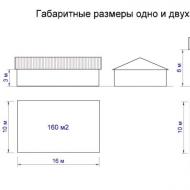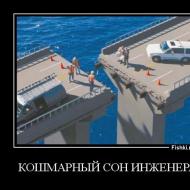
Admission and ways to write off TMC. Causes and grounds for writing off material values. Write-off of the property of budgetary institutions - now according to the new instruction
In each organization, working with inventive material values \u200b\u200b(hereinafter, the TMC) occurs when they need to be written off. This can be a variety of expiration, breakdowns, failure, failure, loss of quality, damage to the goods.
TMTs are written off according to the instructions developed by the organization. All financially responsible persons working with such values \u200b\u200bmust confirm writing what they are familiar with it.
Why write up TMT?
The write-off of the TMC is necessary in order for their real number to correspond to the accounting data. Accounting, as well as in order to avoid abuse of officials working with these values.
How to write off TMT?
Retirement of inventory it is drawn up with an act of write-off. Its compilation indicate that materials and (or) other values \u200b\u200bare not subject to further operation.
The write-off of TMC should be carried out in the presence of a specially established commission, but in fact this possibility is rarely. In special cases, the presence of an employee of the SanEpidem authorities is necessary.
If the TMC is debited due to the fact that it is morally outdated, the act is not compiled.
The act is approved by the head of the organization. He also defines the source at the expense of which the goods are written off. It may be the cost, financially responsible person, profit, etc.
In the act to write-off, information on the product should be indicated - the name, unit of measurement, quantity, weight, price, article, the cause of write-off. Document is signed by all employees belonging to the Commission and the materially responsible person. The date and place of write-off is affixed.
It is necessary to make sure that the requested material values \u200b\u200bwere provided to write off. Depending on the party, the price of the same goods and materials may differ by 10-20%. In case of an error, the accounting and tax accounting data can occur.
The act is made up in 3 copies - one gives up to the accounting department, the second remains in a financially responsible person, and the third to the documents of the organization.
Methods for assessing TMC.
The task of the accountant when writing through the TMC correctly reflect the value of the accurate values.
For this there are several ways:
- average cost;
- at the cost of each unit;
- FIFO.
TMTs are written off the following wiring:
As you can see the write-off of commodity and material values \u200b\u200bis not such a complex process.
If you do it according to the rules - carefully and neatly, then the disposal of materials and other values \u200b\u200bwill not be a problem for you.
In the accounting enterprises, the acquisition of TMC implies the reception and reflection of the receipt of inventive material values \u200b\u200bin accounting. The basis for such an operation serve primary documents. We'll figure it out how valuables are carried out - wiring and necessary forms are given further.
How is the TMC accounting
TMC is the various ingoing material values \u200b\u200bused by the enterprise in the process of credit. The movement of such objects includes receipt and disposal (write-off). At first, current assets fall on the organization's warehouse, then spent depending on the goals set. Accounting for inventories is conducted in accounting accounts in accordance with the requirements of the Order of the Ministry of Finance No. 94n of 31.10.2000, under the legislative standards, the following buildings are provided for this:
-
Any value of values, including disposal or posting, is accompanied by marks in the accounting cards. M-17 (for materials) or metering magazine. TORG-18 (for finished products and goods). To control the remnants and verification of compliance with the availability of accounting data, the statement f. MX-19, commodity reports f. TORG-29, acts on selective checks f. MX-14, reports f. MX-20 (20A).
Reflection of the arrival of TMC.
The posting of TMC to the warehouse is accompanied by wiring depending on the type of valuables. For example, the supplier received a product in the amount of 236,000 rubles. VAT included:
D 60 to 51 by 236,000 rubles. - From the current account, the provider lists the means for the TMC.
D 41 to 60 per 200,000 rubles. - The goods entered the posting of the TMC to the warehouse.
D 19 k 60 to 36,000 rubles. - Reflects the amount of VAT according to the goods received.
D 68 to 19 by 36,000 rubles. - The tax is credited to deduction according to the invoice.
The arrival of the TMC can be made when buying a reporting person:
D 71 to 50 to 50,000 rubles. - issued funds to the account sharing for the purchase of materials.
D 10 to 71 by 37 500 rubles. - reflected the receipt of materials on the advance report.
D 19 k 71 to 6750 rubles. - VAT allocated on acquired materials.
D 68 to 19 to 6750 rubles. - Adopted tax on deduction.
D 50 to 71 by 5750 rubles. - The balance of the account returned to the cashier.
The receipt of finished products can be reflected in the actual cost (D 43 to 20,23,29) or at discounted value:
D 43 to 40 - the accounting value of the products received,
D 40 to 20 - actual cost,
D 90/2 to 40 - the discrepancy between the cost and accounting value (the wiring is done at the end of the month).
Note! Expandation of excess TMC is performed according to the results of inventories. The cost of such objects in accounting includes. 91.1 In correspondence with the appropriate account of the TMC.
Reflection of writing off TMC.
The write-off of TMC is made with the mandatory fill in the acquittal primary documentation. The reason may be a vacation value in production, disrepair of objects or their damage. Examples of wiring:
D 20 (25, 26, 44) to 10 - reflects the vacation of the TMT in production (on general production, economic goals, on the cost of selling goods).
D 79 to 10 (43, 41) - transferred to the company's division materials (goods or finished products).
D 94 to 10 (41, 43) - on the basis of the act reflected the disposal of lost values \u200b\u200bas a result of the shortage or damage.
Registration of the act to write-off materials is required in cases where material values \u200b\u200band reserves available on the balance sheet for some reason have become unusable for any reason. Write-off occurs in a strictly prescribed order and fixed in the appropriate act.
Files
Procedure for writing off materials
To write off material values \u200b\u200brequires the creation of a special commission. It consists of financially responsible persons, as a rule, from different structural divisions of the enterprise. It is in their obligation that the identification and examination of damage, defects or malfunctions of equipment, equipment, furniture, economic inventory, tools, etc. The values \u200b\u200bcontained on the balance sheet of the organization are included.
After fixing such facts, they are authorized to design an act on writing through materials. As a rule, in large organizations for such actions there are specially designed clear instructions.
For writing off materials, good grounds have a documentary confirmation.
Write-off of materials cannot occur without good reason, confirmed by a certain evidence base. In particular, the procedure for debiting materials can be used auxiliary documents.
So it is:
- reports on the product produced for a certain period (its volume, name, etc.);
- reports of financially responsible persons about used material values;
- written documents on the expenditure of materials over established standards (with the rationale for these facts);
- approved calculation on the norms of material costs for the manufacture of a unit of goods;
- other Financial and Accounting Documents.
Before debiting material values \u200b\u200bin the enterprise, an inventory of property should be carried out with its results in the relevant documents.
How to make an act of writing off materials
This document must necessarily contain information about enterprise and about members of the Commission By write-off: their positions, surnames, names, patronymic, as well as a detailed list of written off materials, including their number and cost (magnificent and common), the cause of write-off. The Commission is appointed by a separate order of the head of the Organization, it is also prescribed by the Chairman of the Commission. After making all the data into an act of write-off, each member of the Commission should put under the document signatureThereby certifying that all the information is made true to it. Also, upon completion of the procedure, the act must assure the head of the organization.
The act on the write-off of materials has a legal status, because on the basis of it, the specialists of accounting departments reflect the balance sheet value of the writable material values, as well as direct declaration of the enterprise due to their loss. In turn, this information is reflected in the tax accounting of a legal entity.
The act does not have a unified, standard sample, so it can be compiled in free form or on the template developed within the organization, in accordance with the peculiarities of activities and needs. The document can be issued on the usual A4 sheet of the format or on the company's branded form in a single copy designed for company accounting (however, if necessary, members of the Commission as material and responsible persons may require copies of the act). It is not necessary to assure it with printing, since it relates to internal document flow and fixed in a special journal.
Instructions for filling the act to write-off materials
- In the upper right corner of the document, enter the name of the enterprise, as well as the position, the name, name, the patronymic of the head, who, after the execution of the act approves it.
- Then fill in the name of the document, and also briefly transfer it to the essence (in this case, "on the write-off of materials"), put the date: number, month (in words), year.
- Next, we proceed to the composition of the write-off commission: the position of each employee, the name, name, patronymic, and also fix the fact of write-off material values \u200b\u200band indicate the reasons for their write-off (unsuitable use, detected defects, the completed depreciation period, moral obsolescence, etc.) .
In the second part of the act, it is necessary to include a table in which it is detailed to list all the writing off materials, their name, the amount, the price of one thing and the total cost of the responsible values \u200b\u200bin general. If there are any notes on listed materials, they also need to be designated in the table. Under the table, you need to specify the total cost of the recorded materials (figures and in words), and after making all the necessary information to the document, each member of the Commission signs it, and the document is transferred to the signature to the head of the organization.
Act to write-off inventory-material values \u200b\u200b- the initial accounting document for the seizure of valuable stocks on the expenses of the enterprise. Due to the fact that in typical accounting, the form of an act to write-off TMC is absent, the form is being developed and enshrined in the accounting policy of each organization individually, indicating the composition of the Commission and the cause of withdrawal.
Sample Blanca
In the period when the need arose in the design of the document to write-off TMC, it is always useful to have a sample. Moreover, in order to competently compile a similar document, it is important to comply with some rules. To simplify an understanding, we give a sample of the document on the example of OJSC "Belplat".
OJSC "Belplat", branch in Gomel
(organization)
I approve the head of the organization or face, they are authorized by I.V. Atrochechenko (signature, surname and initials)
Act No. 01/5 on the write-off of used forms of strict reporting on January 31, 2015. The used forms of strict reporting was made in a materially responsible person of the Accountant of the Galtal Marina Aleksandrovna (position, surname and initials) for January 2015 (month)
Name of used Blanks Number of books Series of forms from Blanc Number Blanc
Forms of profitable cash orders 10 PP 106555 106564
Total spent and subject to write-off ________________10 (ten) pieces of blanks.
Members of the Commission: Chief Accountant E.V. Evmenova (position, signature) (surname, initials)
Commission members: Accountant S.M. Loban (position, signature) (surname, initials)
Chairman of the Commission: Head of F-La I.V. Atrochechenko (position, signature) (surname, initials)
Commodity and material reserves are distinguished by the following types:
- product;
- raw materials;
- billet;
- fuel;
- replacement part;
- building materials;
- inventory;
- packaging;
- service.
The document on the write-off of inventory stocks is issued for the regulated confirmation of the actual loss of the quality of goods. It is always drawn up, with the obsolescence of the TMC or at the end of the period of their depreciation.
The above-mentioned accounting act suggests that the values \u200b\u200bindicated in the document should no longer be allowed to implement them.
The instruction according to which the TMC is withdrawn is developed by the enterprise. Moreover, the persons who are responsible for the presence and safety of materials should be familiar with the approved document in writing. The TMC must be written off in a timely manner to match their real number with balance sheet data, as well as to avoid the situation with the abuse of materials by employees of the organization.
With intrapanent accounting calculation, materials, as a rule, act as materials for the content of the technological process and the manufacture of finished products. Moreover, an important factor is the acquisition of values \u200b\u200bdirectly by this company.
For their accounting, the accounts use the following types of accounts:
- №10 - reflects the actual rate of manufactured and acquired materials at discount prices;
- №15 - summarizes information about working capital;
- №16 - reflects data on changing the price of materials.
The deduction of values \u200b\u200bis required in a situation of detection of deficiencies, the loss of reserves and when unsuitable for their future operation is detected.
For what reasons you write off the TMT
The act is a document for writing off from the Balance of TMC for a variety of circumstances.
The reasons why the goods cannot be implemented hereinafter:
- damage to the goods;
- failure;
- breaking;
- deprivation of properties;
- storage time.
During the storage period, the goods lose consumer properties and come to an unsuitable state due to breakage. The act and is issued due to the absence of their future use.
The form of an act to write-off the goods is compiled in the form of TORG-16. This form of the form is ratified by Resolution No. 132 of the State Statistics Committee of the Russian Federation of December 25, 1998 and is used when detected in materials of defects or marriage.
In this document, you need to register the entire list of information with product characteristics:
- name;
- vendor code;
- price;
- quantity;
- weight;
- unit;
- the reason for the write-off of this product.
As for the regulated form of a document for the seizure of TMC on other arguments, it simply does not exist. Such an act may be free.
However, to prove the cost-executable costs, drawing up a document on the withdrawal of commodity values \u200b\u200bis mandatory, regardless of which invoice was framed to leave the material from the warehouse.
The document provided for by the company's accounting policy will confirm the fact of using materials for organizational purposes.
Plan of action before the procedure for drawing off the document
It is logical to assume that the act of write-offs the TMC confirms the actual consumption of materials. Accordingly, after its approval listed on the items of material values \u200b\u200bwill not be used in the subsequent production process.
Even if we consider the fact that there is no definitely regulated by the legislation of the universal form of a form for write-off, draw up this document will have to. It should be noted that the tax services very seriously check the costs of material reserves.
Before drawing up an act to the write-off of the TMT, it is important to carry out a procedure for execution of the requirement requirement, in which the movement of material values \u200b\u200bwill be reflected.
Also, the document should indicate their further movement to the enterprise's warehouse, to issue a materially responsible official. Further, the entire list of materials specified in the invoice is transmitted from the warehouse and is assigned to the authorized person. This procedure is the final stage.
The procedure for exemption of TMC.
Actions to write off valuable stocks should be carried out in the presence of a special composition of employees of the organization. In this role, the chief accountant, the storekeeper, and in some cases a representative of the sanitary-poider bodies. The document must be approved by the head of the enterprise and signed by all employees who are part of the Commission, as well as a materially responsible person.
In addition to the actions listed above, it is the manager who must determine the source for which the goods will be written off (cost, profit and the like). In addition, the act must specify the full information about the product. Then, necessarily, check the cost matching, batch and additional characteristics.
Everything else, you need to make sure that all the specified values \u200b\u200bhave already been issued from the warehouse according to the invoice. This information is necessary in order to eliminate the divergence of data in tax and accounting.
The act to write-off TMC is usually drawn up in three identical copies. The first remains in accounting, the second is stored in the documentation of the structural unit, and the third remains an authorized person. As mentioned above, if the TMC is morally outdated, the act of seizure is not issued at all.
Rules and nuances of the preparation of a document on write-off
During the withdrawal of the TMC from the balance, it is very important to correctly indicate their cost.
For this, the accountant can use the following signs:
- the average value of the cost;
- the cost of all units separately;
- the cost of the first received or the manufactured batch (FIFO method).
Blanca form
The basis of the compilation of the act to write-off TMC is the form of the established form of TORG-16, which is approved by Decree No. 132 of the State Committee of the Statistics of the Russian Federation of December 25, 1998
However, the development of a specific form, which will serve as an optimal example of an act to write-off for this enterprise, is assigned to the chief accountant. To do this, he takes a ready-made template that meets all the requirements for a particular organization. At the final stage, the accountant adapts the sample, given the actual state of affairs, and constitutes a ready-to-write act.
Preparation of an act in production
Despite the absence of a regulated form of an Act, during the preparation of the document it is worth following a number of standards. As a rule, these are the norms of conducting office work, that is, the form of the form and the correct indication of the data.
For example, the date that will appear in the document must correspond to the Day of Registration of the Act. In mandatory, it is necessary to register all the procedures that were carried out before writing, namely the inventory and stages of it.
The title is indicated in the form of the PAGIENT or proposed case:
- "Act of writing off materials";
- "Act about writing through materials."
Next, the text prescribes the basis of drawing up an act, namely the number of the order signed by the Director of the Organization. This item is prescribed in the upper right corner of the form only on the first page (if there are several stanzes).
In addition, the document is prescribed:
- the place of drawing up a document;
- a list of officials (members of the Commission), which are involved in the control over the write-off procedure (with a complete indication of the names and posts and the allocation of the FIO of the Chairman of the Commission);
- list of commodity values;
- the number of goods to write-off;
- the final true value of stocks at the time of seizure;
- the reason for the loss of material value of this product.
The above data, in most cases, are made in the form of a table.
As for speech revolutions "We, the following", "compiled a real act," they should be avoided, because in the office work, these phrases are not used.
Upon completion of the execution of the act, all members of the Commission bonded the document to their signature. Moreover, if you draw up a commission from one person - the write-off of material values \u200b\u200bcan be simplified. For this, it is necessary to take care that all functional responsibilities for storing and use, documented by one company employee. The feasibility of making such a decision lies on the main accountant.
List of actions that will need to make after the execution of an act to write-off
For the actual recognition of reserves, at the end of the formation of the act, an accountant should make accounting for production.
The receipt of materials on the enterprise has the following classification:
- From suppliers for fee.
- From its own production (manufacturing material with its own forces).
- From founders.
- When dismantling the equipment.
- Barter operations.
- Gratuitous receipt.
Based on the information that is listed in the act of seizure and balance sheet certificate, the following wiring are drawn up:
- recreation of D94 K10- reflects the accounting value of reserves that are subject to withdrawal;
- wiring D20 K94 - shows the value of the money value of deterioration or shortage of reserves (within the boundaries of reasonable natural loss);
- wiring D20 / 2 K73 - shows the amount of reimbursement of a shortage of the guilty person (in the case when the number of units of the reserves exceeds the limit of natural loss);
- wiring D99 K10 - reflects the destruction of reserves as a result of a natural disaster;
- wiring D99 K68 - Restores VAT (value added tax), which has been paid earlier;
- wiring D91 / 2 K10 and D91 / 2 K68 - Write off the reserves under the contract of gratuitous use.
Moreover, before the accountant issues the wiring specified in the last paragraph, you need to make a large number of documents.
Namely:
- application for issuing materials;
- contract;
- commodity invoice.
What will happen if not to compile an act
As mentioned earlier, if the values \u200b\u200bthat are subject to withdrawal are written off from a warehouse on the basis of an expired depreciation, either due to moral obsolescence, the form of TORG-16 can not be used. In this situation, the ACT is compiled in an arbitrary form with an indication of the sequence number of the product and the date of paperwork.
Also, the name of the legal entity is also prescribed, the name of the director and the name of the department, from which these values \u200b\u200bare written off.
- the name of all units of write-off;
- their serial numbers;
- quantity;
- cost per unit of products;
- the cause of writing off.
The last line will be the accounting value of warehouse stocks and the final figure that is subject to withdrawal. The act should be linked by all participants in the commission of the Commission, signed by the Director of the Organization and enshrined the stamp of the enterprise.
However, in many organizations, the timing of the implementation of this event can be delayed. Therefore, in exceptional situations, the head may decide that such a document is not necessary to draw up at all. Then it is recommended to take as an example of systematic indications of accounting in accounting of material and production reserves (MPZ) and on the design of the initial documentation for the issuance of TMC to various branches and department departments.
In each organization, working with inventive material values \u200b\u200b(hereinafter, the TMC) occurs when they need to be written off. This can be a variety of expiration, breakdowns, failure, failure, loss of quality, damage to the goods.
TMTs are written off according to the instructions developed by the organization. All financially responsible persons working with such values \u200b\u200bmust confirm writing what they are familiar with it.
Why write up TMT?
The write-off of the TMC is necessary in order for their real number to correspond to the accounting data. Accounting, as well as in order to avoid abuse of officials working with these values.
How to write off TMT?
Retirement of inventory it is drawn up with an act of write-off. Its compilation indicate that materials and (or) other values \u200b\u200bare not subject to further operation.
The write-off of TMC should be carried out in the presence of a specially established commission, but in fact this possibility is rarely. In special cases, the presence of an employee of the SanEpidem authorities is necessary.
If the TMC is debited due to the fact that it is morally outdated, the act is not compiled.
The act is approved by the head of the organization. He also defines the source at the expense of which the goods are written off. It may be the cost, financially responsible person, profit, etc.
In the act to write-off, information on the product should be indicated - the name, unit of measurement, quantity, weight, price, article, the cause of write-off. Document is signed by all employees belonging to the Commission and the materially responsible person. The date and place of write-off is affixed.
It is necessary to make sure that the requested material values \u200b\u200bwere provided to write off. Depending on the party, the price of the same goods and materials may differ by 10-20%. In case of an error, the accounting and tax accounting data can occur.
The act is made up in 3 copies - one gives up to the accounting department, the second remains in a financially responsible person, and the third to the documents of the organization.
Methods for assessing TMC.
The task of the accountant when writing through the TMC correctly reflect the value of the accurate values.
For this there are several ways:
- average cost;
- at the cost of each unit;
- FIFO.
TMTs are written off the following wiring:
As you can see the write-off of commodity and material values \u200b\u200bis not such a complex process.
If you do it according to the rules - carefully and neatly, then the disposal of materials and other values \u200b\u200bwill not be a problem for you.
















